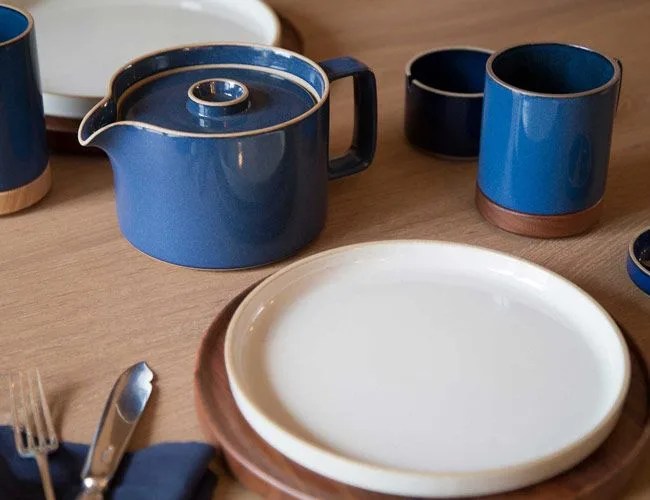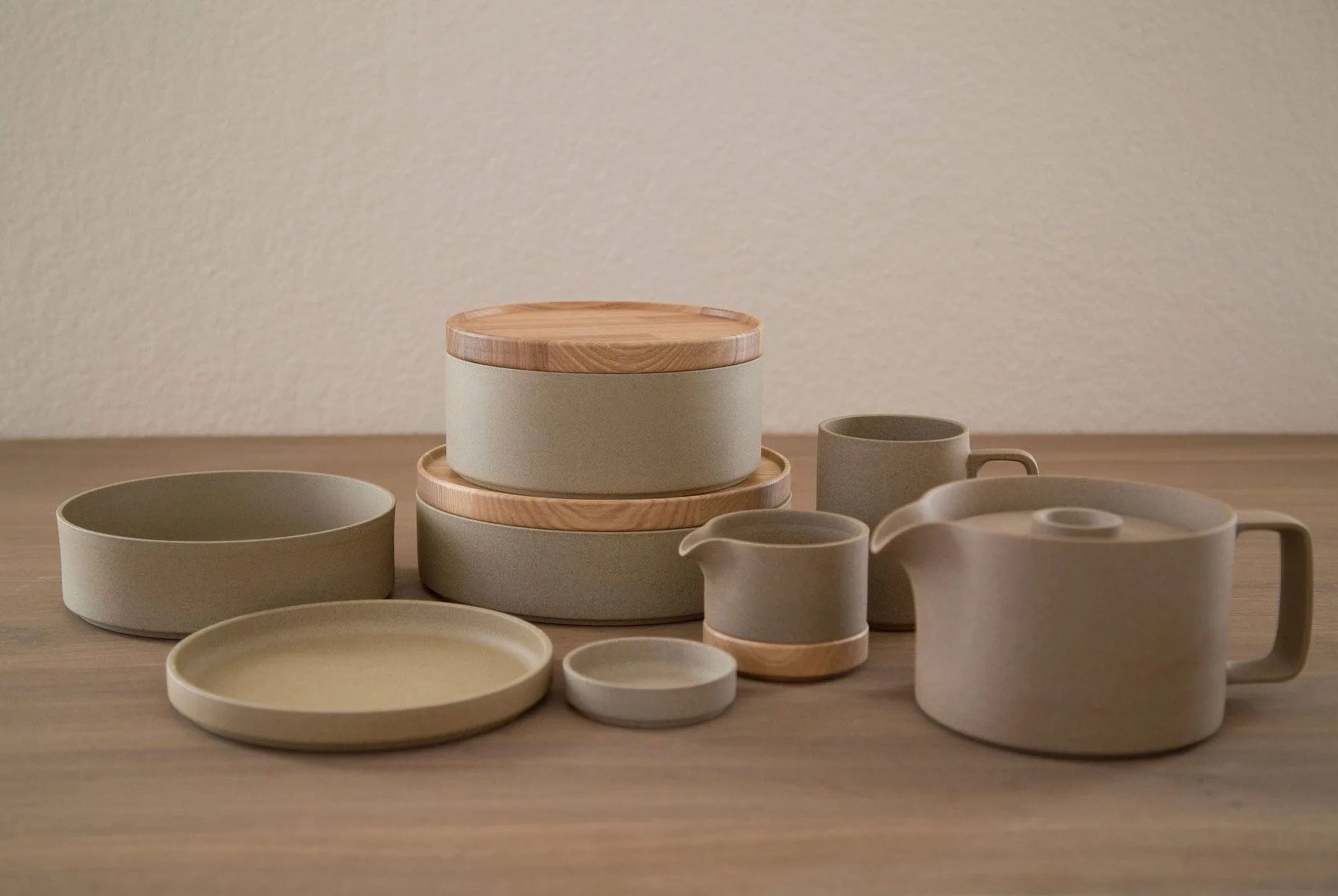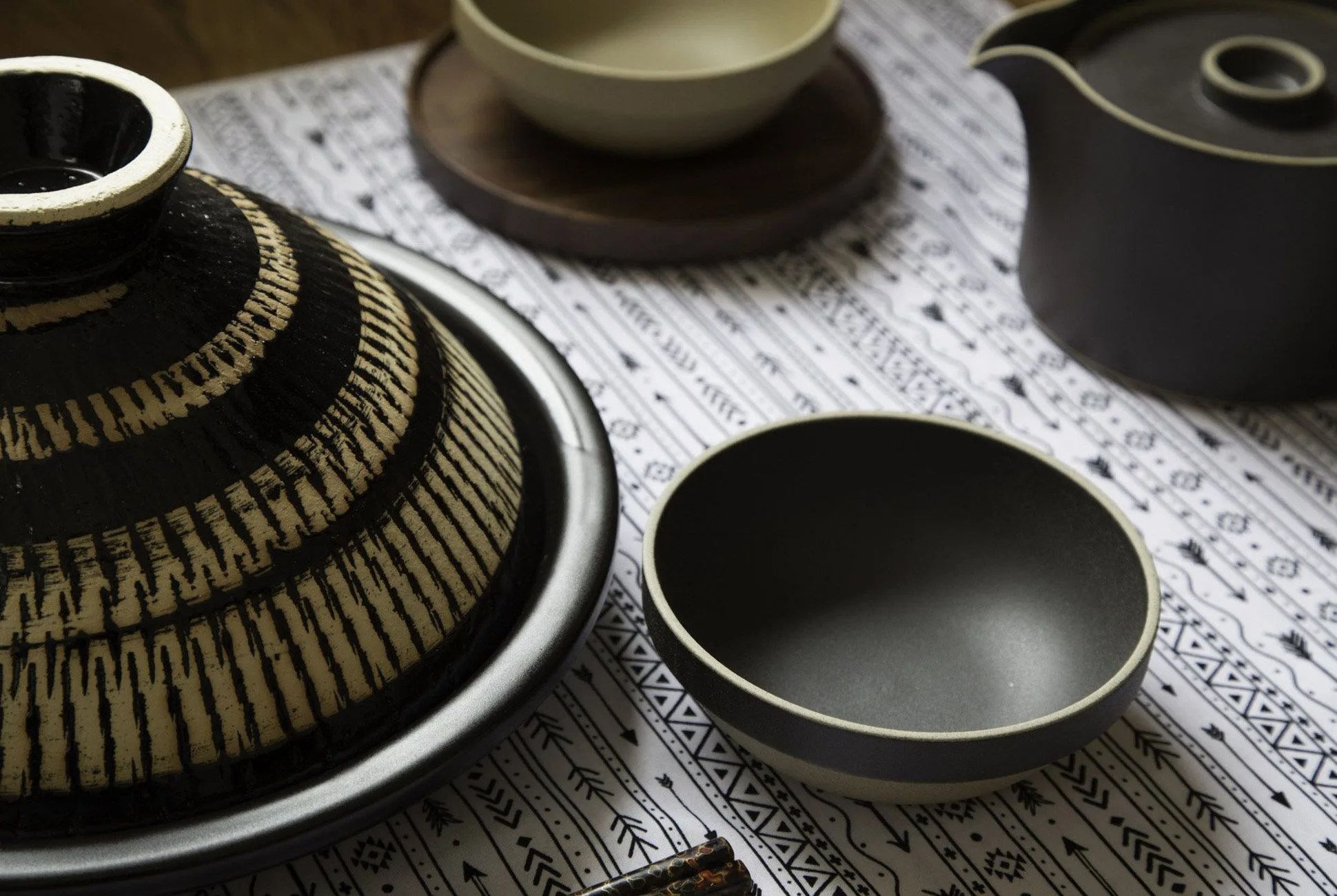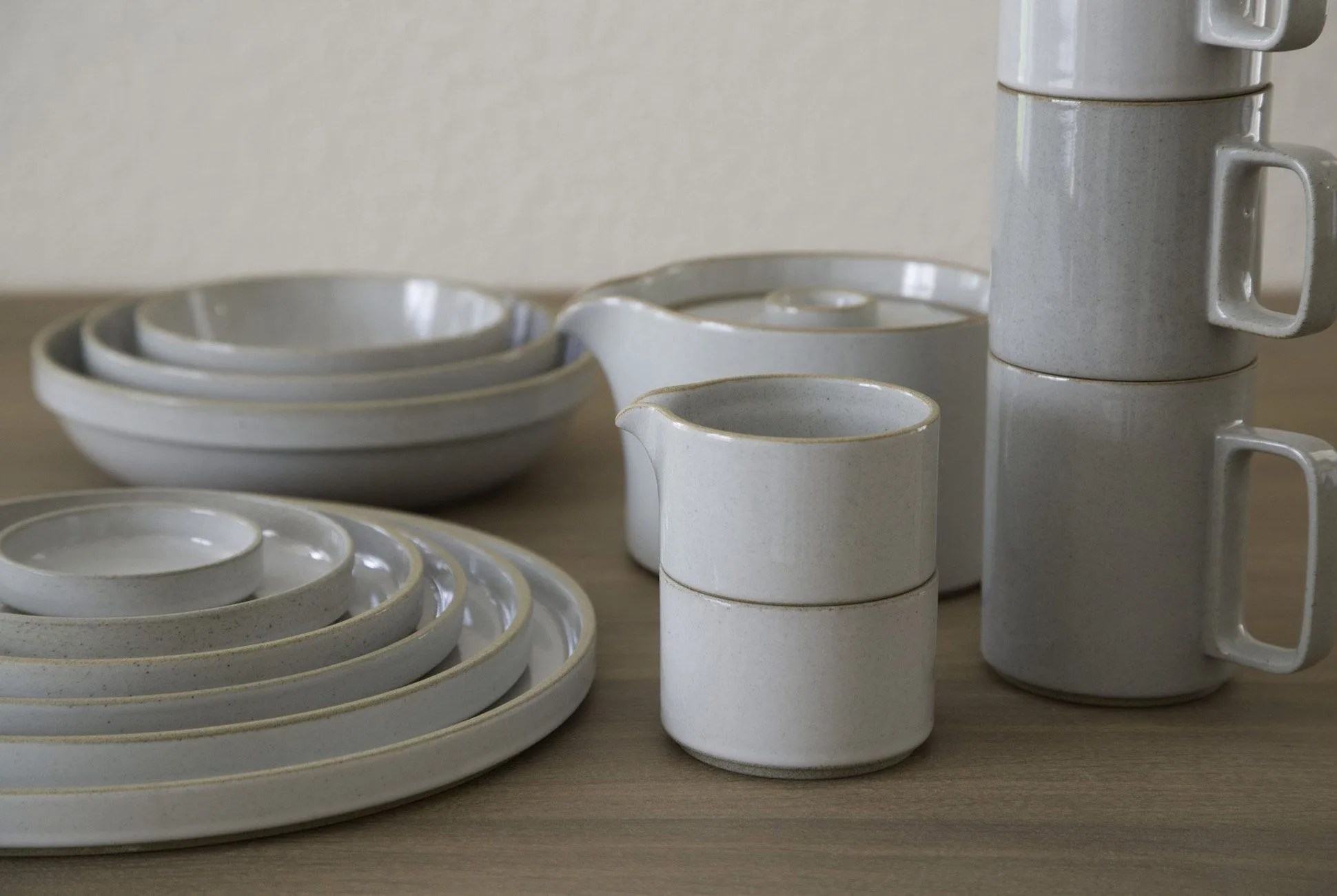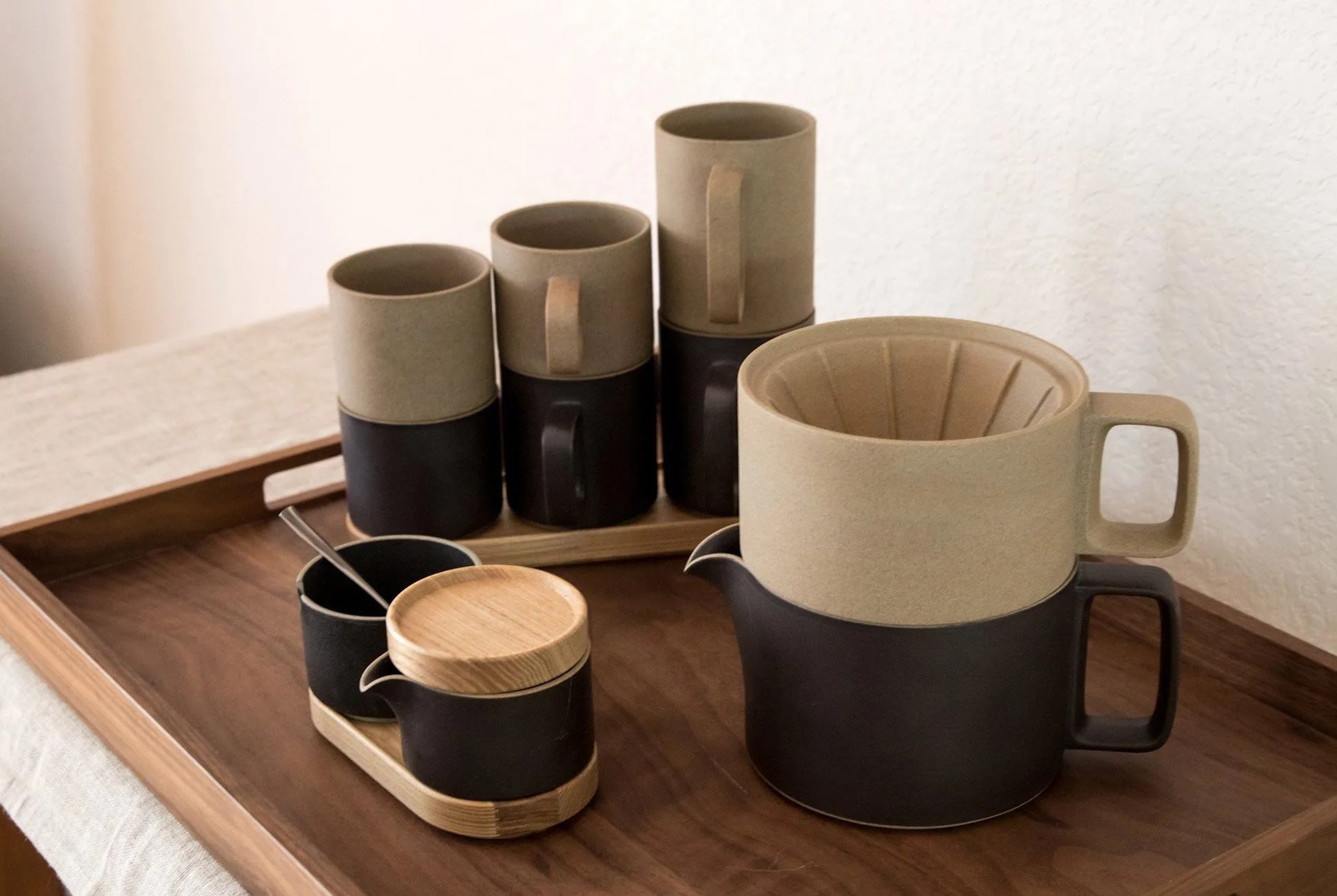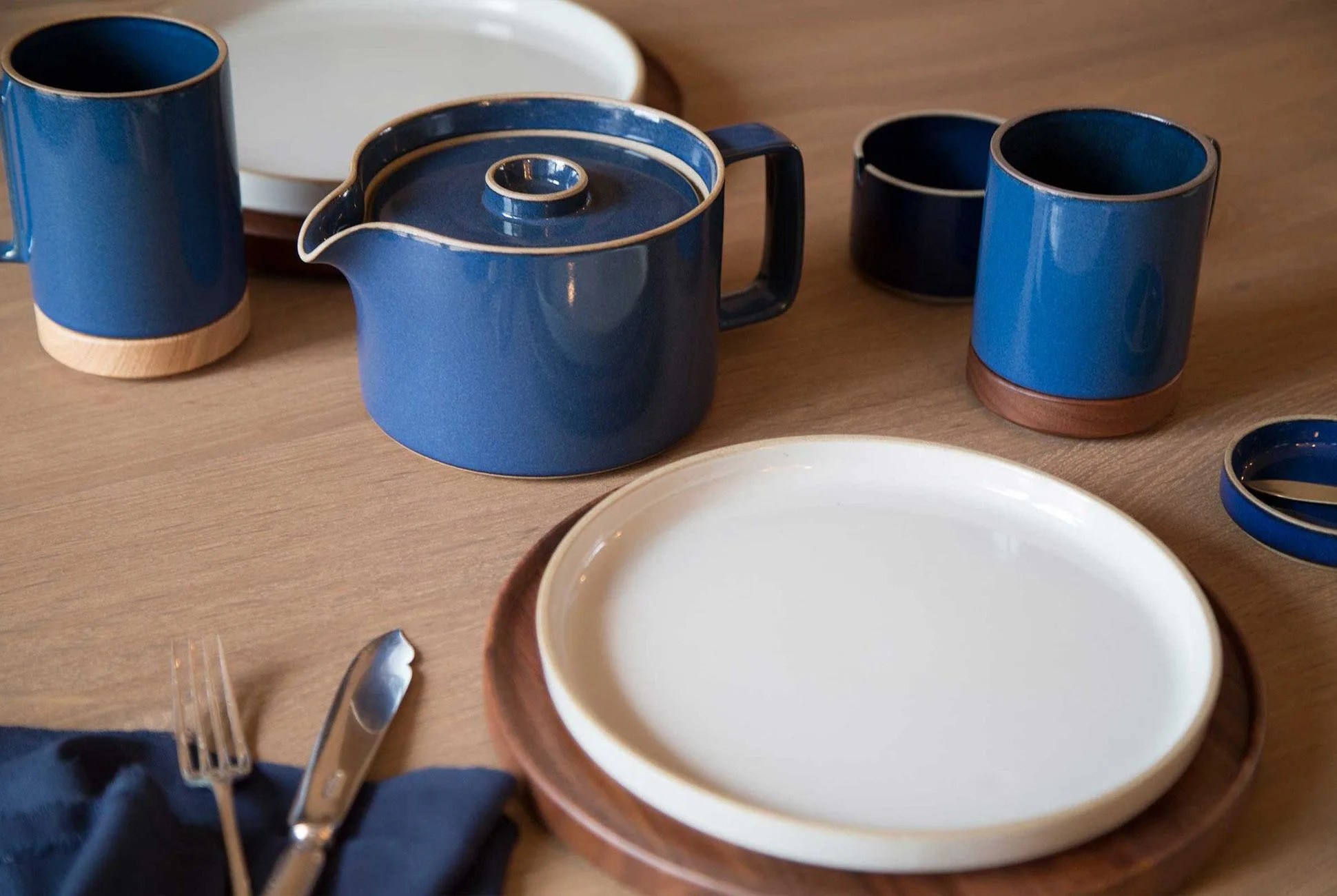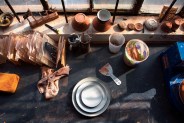5 photos
American attitudes toward porcelain have long been misguided. Often perceived as fragile, porcelain dinnerware has consequently been relegated to formal occasions. Because it is fired at exceptionally high temperatures, however, the earthenware vitrifies into a nonporous, durable mass. With simple forms that are stunning in their functionality, Hasami Porcelain is reshaping perceptions of porcelain and allowing it to become a staple in minimal, design-minded boutiques along the way.
Brought stateside by Takuhiro Shinomoto, founder of Los Angeles–based Japanese design shop Tortoise General Store, the dinnerware hails from the town of Hasami in Nagasaki, Japan, which has a 400-year pottery tradition. The modular, stackable forms that define Hasami Porcelain might recall Massimo Vignelli’s iconic melamine Hellerware series, but they’re rooted in the centuries-old Japanese tradition of tiered lacquerware called jubako, typically reserved for celebratory meals and bento lunch boxes.
For both practical and ceremonial purposes, a good deal of Japanese dinnerware is stackable: the lids of hazoken boxes are used as trays; the stacked, high-walled trays of a fuchidaka are used to serve cakes in tea ceremonies; large don bowls are topped with lids to retain a soup’s heat. Hasami Porcelain borrows from this tradition of modularity to create a dinnerware series comprised of multifunctional tools, with coasters doubling as lids and plates serving as trays. The plates and bowls — of which there are two depths — are available in five diameters to enable increased flexibility and customization, rather than designating one as a salad or dinner plate.
While rooted in tradition, Hasami Porcelain breaks with convention by shying from ornamentation. The porcelain is also blended with local clay, giving Hasami’s dinnerware a heft that more traditional porcelain lacks. The unglazed wares begin with a texture akin to worn-down sandpaper that buffs out over time, intended to be used, reused and grow better with wear.
